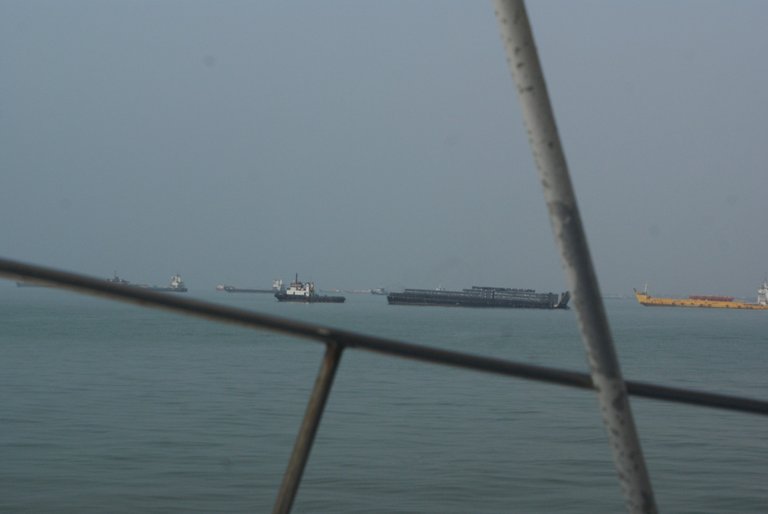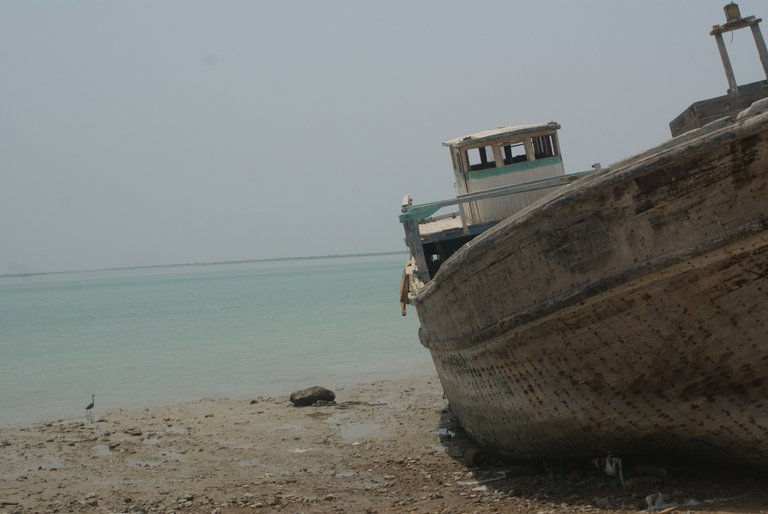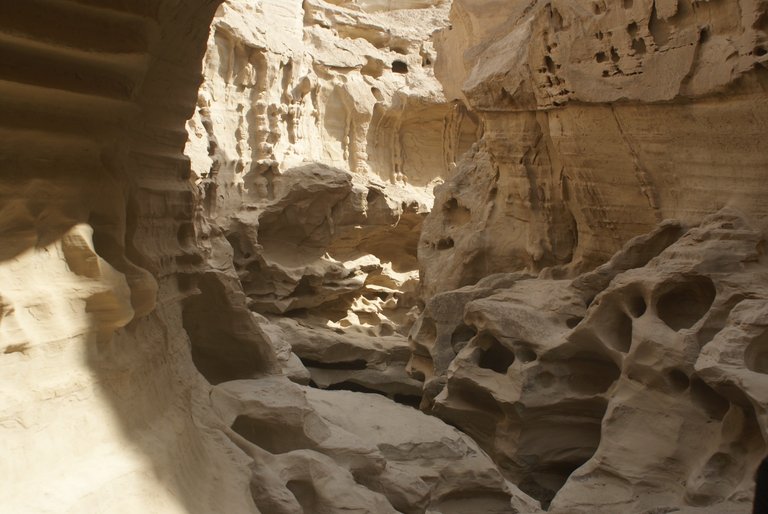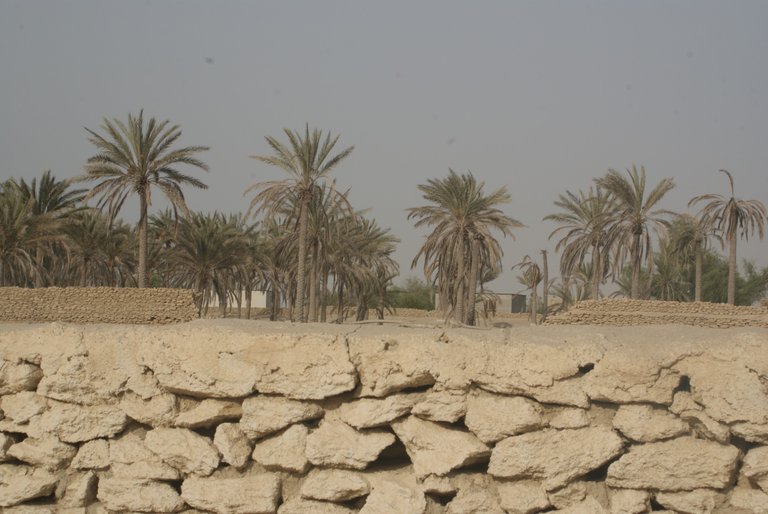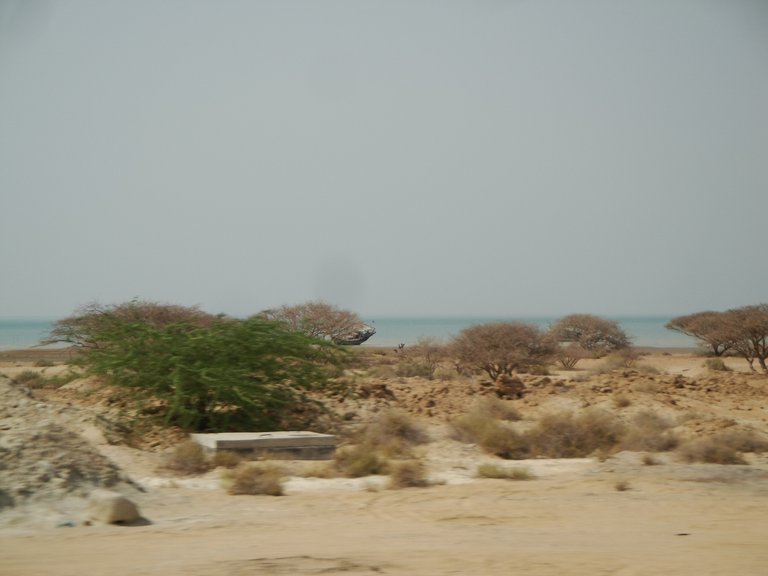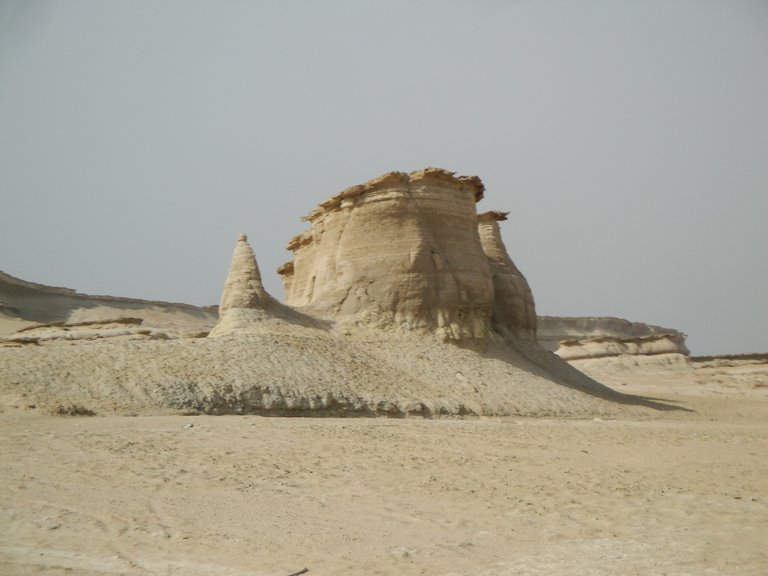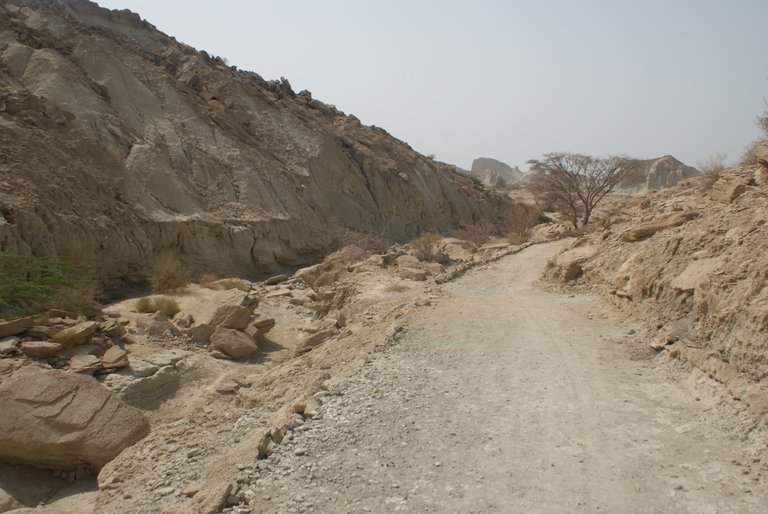[ENG]
A few entries earlier, when talking about the city of Yazd, I mentioned the extraordinary feeling that accompanied me after leaving the air-conditioned bus onto the streets of Yazd in the middle of a hot summer day. I had an equally strong, but slightly different feeling after getting off the bus in the seaside town of Bandar-e Abbas, located on the Persian Gulf, more precisely on the Strait of Hormuz. The feeling I experienced after leaving the air-conditioned bus in Bandar-e Abbas could only be compared to entering a steam sauna. The high temperature and even higher humidity meant that at first I couldn't catch my breath, and in the next moment my whole body became wet with this terrifying humidity. Bandar-e Abbas is not a very large city compared to Iranian standards, because it has only 500,000 inhabitants, but due to its location, it is a key center of industry, trade and military for Iranian geopolitics. Bandar-e Abbas is probably Iran's largest seaport. Around the city, on an area similar to the civilian part of the city, there is an industrial part with steel mills, refineries and container terminals, and as we entered the city we could see a whole sea of different types of chimneys, each of which smoked in a slightly different color.
Bandar-e Abbas is one of the most important cities not only for Iran, but also for the entire world economy. Up to 30% of the world's oil production passes through the Strait of Hormuz every day in tankers, and it is known that oil is the lifeblood of our current civilization. The economy of countries such as Iraq, Qatar, Kuwait, Bahrain, the United Arab Emirates, and to a lesser extent Saudi Arabia, depends directly on what is happening in the Strait of Hormuz and whether any missiles that threaten world trade are launched from the military base in Bandar-e Abbas .
[PL]
Kilka wpisów wcześniej mówiąc o mieście Yazd wspominałem o tym niezwykłym uczuciu jakie towarzyszyło mi po wyjściu z klimatyzowanego autobusu na ulice miasta Yazd w środku gorącego letnego dnia. Równie mocne, lecz nieco odmienne uczucie miałem po wyjściu z autobusu w nadmorskiej miejscowości Bandar-e Abbas położonej nad zatoka Perską, a dokładniej nad cieśniną Hormuz. To uczucie które spotkało mnie po wyjściu z klimatyzowanego autobusu w Bandar-e Abbas porównywalne mogło być tylko do wejścia do sauny parowej. Wysoka temperatura, i jeszcze wyższa wilgotność spowodowały, że w pierwszej chwili nie mogłem złapać oddechu, a w drugiej chwili całe moje ciało stało się mokre od tej przerażającej wilgoci. Bandar-e Abbas jest to niezbyt duże ja na warunki Iranu miasto, bo liczy zaledwie 500 tysięcy mieszkańców, ale z uwagi na swoje położenie jest to kluczowy dla Irańskiej geopolityki ośrodek przemysłu, handlu i wojskowości. Bandar-e Abbas to chyba największy port morski Iranu. Wokół miasta na powierzchni zbliżonej do tej części cywilnej miasta znajduje się część przemysłowa z hutami stali, rafineriami i terminalami kontenerowymi i wjeżdżając do miasta mogliśmy oglądać całe morze różnego rodzaju kominów, z których każdy dymił w nieco innym kolorze.
Bandar-e Abbas jest jednym z najważniejszych miast nie tylko dla Iranu, ale i także dla całej światowej gospodarki. Codziennie przez Cieśninę Hormuz przepływa w tankowcach nawet 30% światowego wydobycia ropy naftowej, a wiadomo, że ropa naftowa jest krwią naszej obecnej cywilizacji. Gospodarka krajów takich jak Irak, Katar, Kuwejt, Bahrajn, Zjednoczone Emiraty Arabskie, czy w mniejszym stopniu Arabia Saudyjska zależy bezpośrednio od tego co się akurat dzieje w Cieśninie Hormuz i czy z bazy wojskowej w Bandar-e Abbas nie startują żadne rakiety zagrażające światowemu handlowi.
[ENG]
Several very interesting islands emerge from the waters of the Strait of Hormuz off the Iranian coast, the largest of which is the island of Keshm. On an area of 1,491 square kilometers, there are 100,000 inhabitants, whose culture is largely different from that found on mainland Iran. Women living on the island wear characteristic decorative masks covering their faces. I had the impression that these people were less open to strangers, so we preferred not to take any risks and didn't photograph anyone. The island is covered with various rock formations, the most interesting of which is the Chahkooh Valley. It is located 70 kilometers from the city of Qeshm. Once upon a time, this entire valley was the seabed, of which only numerous crevices, cracks and rock depressions remain today. In the valley walls you can find countless amounts of fossilized shells, which provide tangible evidence of the maritime past of this island.
[PL]
Z wód cieśniny Hormuz przy Irańskim wybrzeżu wyłania się kilka bardzo ciekawych wysp, z czego największą jest wyspa Keszm. Na powierzchni 1491 kilometrów kwadratowych, mieszka 100 tysięcy mieszkańców, którzy charakteryzują się w dużym stopniu odmienna kultura od tej spotykanej na kontynentalnej części Iranu. Kobiety mieszkające na wyspie noszą charakterystyczne ozdobne maski zakrywające twarz. Miałem wrażenie, że ci ludzie są też mniej otwarci na obcych dlatego woleliśmy nie ryzykować i nie fotografowaliśmy nikogo. Wyspa pokryta jest przeróżnymi formacjami skalnymi z których najciekawsza to dolina Chahkooh. Znajduje się 70 kilometrów od miasta Qeshm. Niegdyś cała ta dolina to było dno morskie, z którego do dzisiaj pozostały wyłącznie liczne szczeliny, pęknięcia i zagłębienia skalne. W ścianach doliny można znaleźć niezliczone ilości skamieniałych muszli które bardzo namacalnie poświadczają o morskiej przeszłości tej wyspy.








